-
giulhia.
User deleted
The Fire Fairies
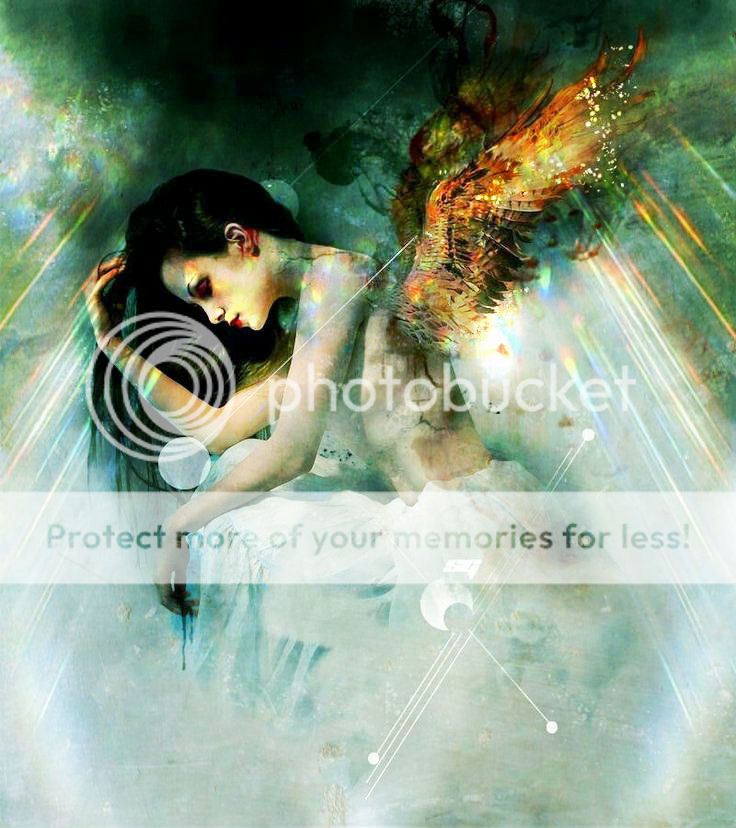
As well as the many house fairies that live in the hearth or behind the stove, there are spirits that represent the fire itself. In Northern European countries, they were called drakes, salamanders or dragons. They are said smell like rotten eggs and their presence is usually only betrayed by the stench, though they are sometimes glimpsed as a flaming ball. They only take on the character of fire when they fly, when they look like streaks of flame or fiery balls with long tails.
Otherwise they look like small boys with red caps and coats. They are house fairies who move into a house and keep the firewood dry and bring gifts of gold and grain to the master of the house. The bond is between the male head of the house and the male drake, and is a serious pact, often written in blood. The drake takes care of the house, barn and stables, making sure that the pantry and money chest are well stocked.

They can travel the world in a split second and bring their masters a present back from far away places. In return, the master keeps the drake fed and treated with respect. Should the drake be insulted, the house will not be there long. If you see a drake on its travels, take shelter, for they leave behind a poisonous sulfurous fug. If you quickly shout "half and half" or throw a knife at the creature, then the drake may drop some of its booty in your lap. If two people together see a drake, they should cross their legs in silence, take the fourth wheel off the wagon and take shelter. The drake will then be compelled to leave them some of his haul.
The spirit of the hearth fire is often thought of as female and was once widely worshiped as a goddess. In Greek myth she was Hestia. Her name, according to Plato, means 'the essence of things'; a formless essence symbolized by the flame, which flows through everything that has life.
As the domestic hearth is the sacred center of the home, the hearth of the gods is the center of the cosmos. She presided over all hearth and altar fires, and she was worshiped every day with prayers offered to her before and after meals. Her hearth was in the care of the woman of the home and before each meal something was thrown on the fire as an offering.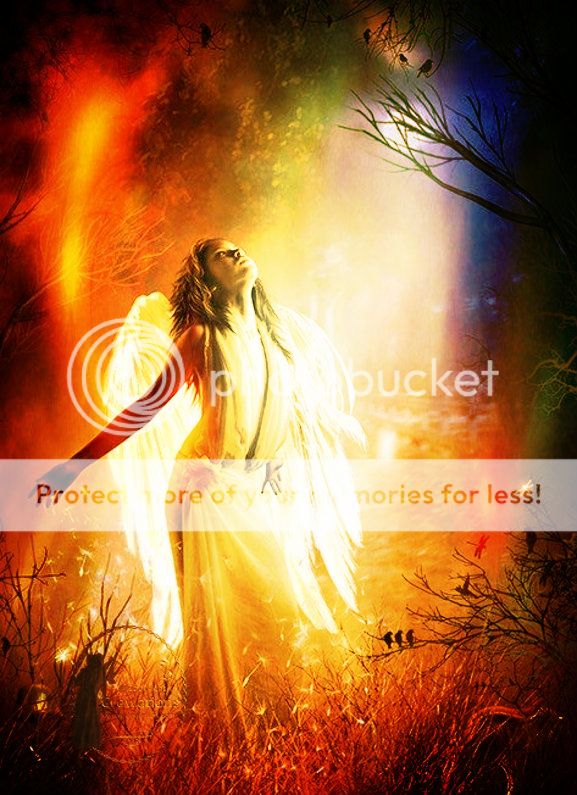


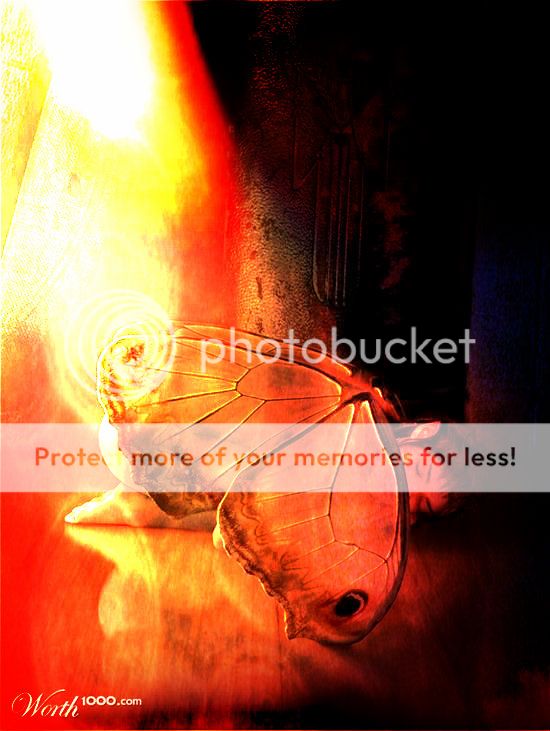
In Celtic lore, the spirit of the hearth is Brighid. She was invited into the home by the woman of the house, in the form of a doll or corn dolly dressed in maiden white. Oracles were taken from the ashes of the hearth fire, which people examined for a sign that Brighid had visited, i.e. a mark that looked like a swan's footprint; if found, it was a lucky omen (the swan was an ancient attribute of the goddess Brighid). Many Irish homes still have a Brighid's cross hung up. This four equal-armed cross was originally a solar symbol.
There are many other fire spirits. The Arabian Djinn, for example, are composed of fire without smoke, with fire in their veins instead of blood. Will o’ the wisps are bog fairies that appear as curious lights, usually seen flickering in the distance over swamps and marshes. They jump and dance along with the aim of leading travelers astray. Perhaps the most common name is Jack-a-lantern or Jack O'Lantern. In Wales the will o' the wisp it is called ellylldan meaning ‘fire fairy’. It can be seen dancing about on marshy ground, into which it may lead a hapless traveler. When the will o' the wisp appears at sea it is generally called St Elmo's Fire, and is seen on ship’s masts and accompanied by a crackling sound.
There is a connection between trades that use fire and magic. The magical reputation of the smith persisted in Europe into the nineteenth century and is still extant in India and Africa.
In Britain, it was believed that smiths were blood charmers [healers] and could foretell the future. Even the water the smith used to cool metal had magical properties and was much sought after for healing purposes. A smithy-forged nail, hammered into a tree, was thought to transfer the illness to the tree. Smiths also possessed the secret of the Horseman’s Word which, when whispered into the ear of the wildest horse, would calm it.
People swore oaths by the smith's anvil and in some places, he had the authority to marry couples, as at the famous Gretna Green in Scotland. In fairy stories smiths often protect people and animals against malignant fairies, evil spirits, witchcraft, and the evil eye.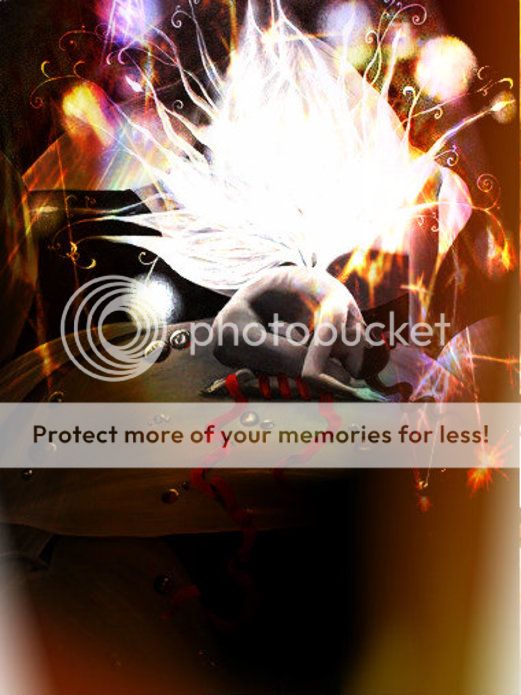



THE POWERS OF FIRE
Fire is the most mysterious of all the elements. It seems almost supernatural in comparison to earth, air or water. The spirits of fire are concerned with creativity, life energy and the spirit. Fire generates illumination within, the light of the spirit. Fire gives us the power of energy, igniting action, animation and movement.
It sparks courage and acts of bravery. It heats passion and enthusiasm. Fire is the power of inner sight and creative vision, directing it and controlling it to make it manifest in the world, the dominion of Will. It is the glow of the candle flame, the warmth of the hearth, the burning heat of the desert, the incandescence of the sun. However, fire transforms what it consumes, a power which may either purify or destroy.
Fire is wild and untameable, dangerous; it can burn those around it. This is true of the fire spirits too. They are intense, impatient of human ignorance; they can be intolerant of our failings, and capable of infernos of rage and intemperance.
Rituals connected with fire spirits are necessarily concerned with placating the spirits, availing ourselves of their gifts while averting disaster. A friend of mine invented a divination system she called Ken Sticks. Ken is a rune connected with illumination and fire. She used nine matches, invoking the powers of Ken into each as the match was struck and flared, then blown out.
The matches were then thrown onto a cloth and the resulting rune shapes read. Shortly after inventing this method, she taught it at a workshop to nine people. Thus there were nine times nine invocations of Ken- fire. After the workshop we stayed at a hotel which caught fire twice in the same night. Other workshop attendees also experienced unexplained outbreaks of fire. Fortunately, no one was hurt, but be warned!
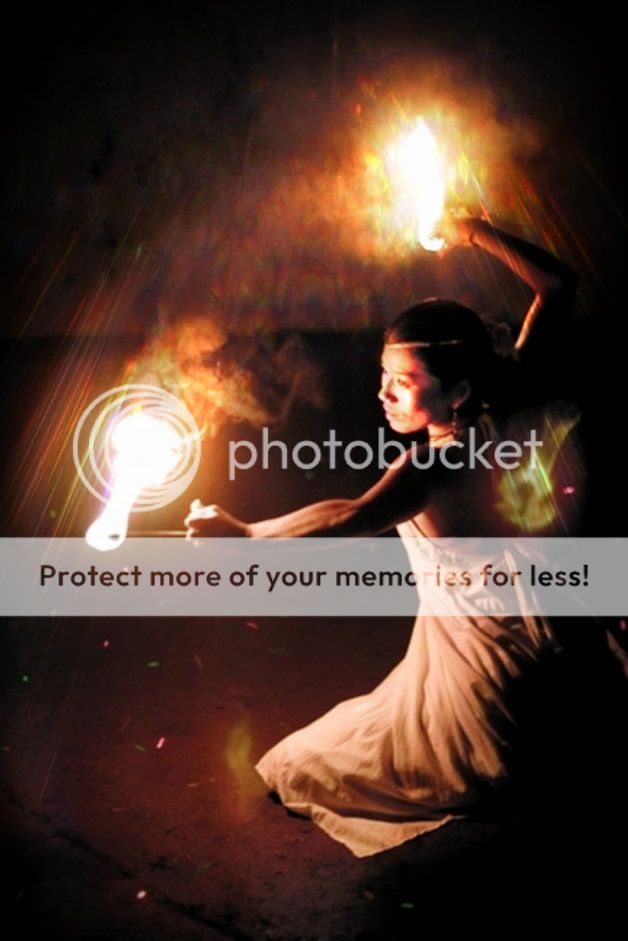
Fire is an agent of transformation- the food in the cauldron is changed as it cooks, raw ores and metals are altered into useful objects on the blacksmith’s forge, and it transforms the materials it consumes into ashes. Fairies and other spirits were attracted by these fires and circled round them, and sometimes had to be placated so that they would not cause trouble and steal the feast. Fire spirits are agents of purification. Cattle were driven over the ashes of the Beltane and Samhain fires to purify them, and flaming torches were carried around the crops at Midsummer to protect them.
Fire symbolizes the life force. It was associated with the fertility of the land, and the ashes of the sacred fires were scattered on the land, to transfer the vigor of the fire spirits into the earth. It was also connected with the fertility of humans. Young men would leap through the festival fires to increase their virility, and young women jumped to become fertile.
Fire magic is concerned with action and will. Fire corresponds to energy, power, passion, vitality.
People with a preponderance of fire in their make-up are energetic, vital, passionate, creative, intuitive, generous, courageous, driven, friendly, enterprising, philanthropic, warm, cheerful and honorable. However, they can also be ostentatious, arrogant, excessive, dominating, vain, promiscuous, aggressive, tactless and opinionated.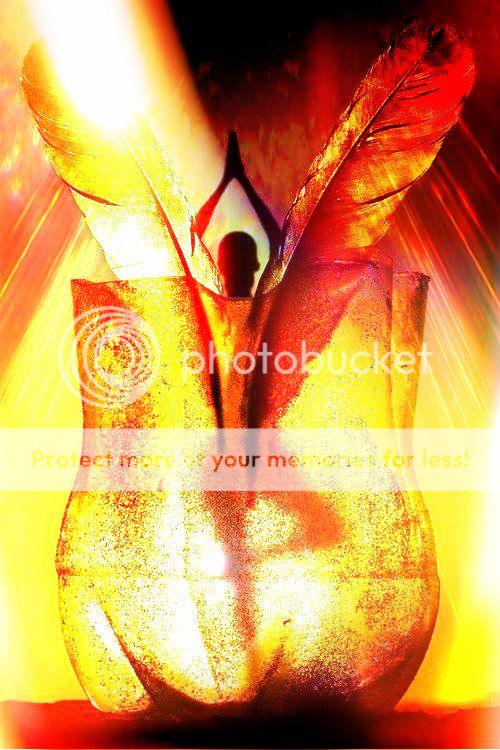
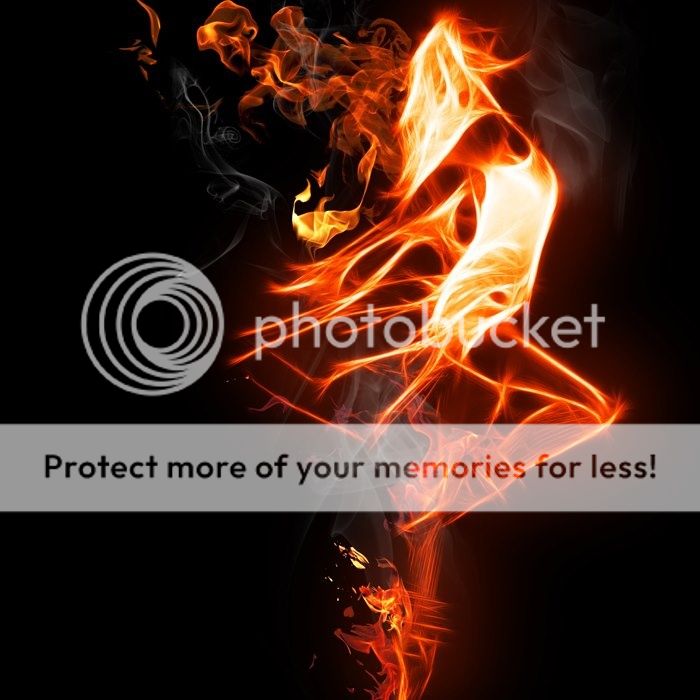
Household Spirits Shrine
For the ancients, the hearth-place was also the altar of the household spirits, where offerings could be made; when you being to think of your home as having indwelling spirit it can make a huge difference to the quality of life within it. You can use your mantelpiece as an altar, and many people do, or you can make a small shrine or niche beside it.
What you put on that altar is up to you. You might want statues of gods and goddesses or a fairy to represent the house spirit. You could bring the outside in by adding stones, crystals or leaves, plus candles and your magical tools if this seems appropriate. Change the flowers often and decorate it for the Eight Festivals.
As the place of protection, decorate it with shiny horse brasses, which attract sun energy and deflect negativity.
Hearth Spirit Shrine
As well as protective ancestral spirits, the spirit of hearth and fire dwells within every hearth, whether large or small. In many ancient religions, a fire was kept constantly burning to represent the presence of the divine. Nowadays, you probably don’t have a fire in your home all the time, if at all. But you can celebrate the living flame with candles, joss sticks, incense on charcoal and oil lamps.
The Hearth as Cosmic Axis
As the dwelling place of the living flame, the hearth was a holy place, a threshold between this world and the realm of the gods. Its rising smoke took prayers to the gods of the Upper-world, while the gods of the Worlds Below could be contacted through the hearthstone.
Offerings were placed on the hearthstone. In many tales, the hearth and chimney it is the entrance and egress of spirits. In lore, various fairies are said to live behind the hearth, or to come down the chimney.
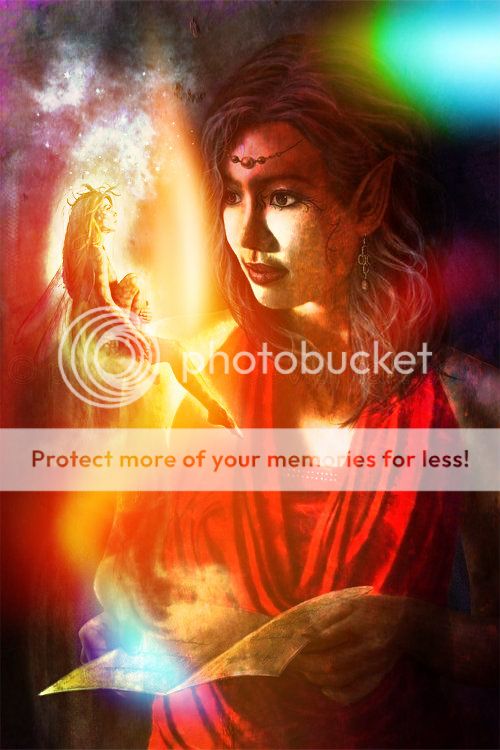

Fire Smooring Ritual
At night the fire should be covered in a special way to appease the hearth spirit. The embers are divided into three equal sections, with a peat laid between each section, each one touching a little mound in the middle. The first peat is laid down in the name of the spirit of Life, the second in the name of the spirit of Peace, and the third in the name of the spirit of Grace.
The woman of the house then covers the circle with ashes, a process known as smooring, taking care not to put out the fire, in the name of the Three of Light [originally the goddess Brighid]. A protective prayer is then said over it:
Protect my house and family
Keep my hearth warm and welcoming to all who come
In the name of the Three of Light
Moving House Ritual
When moving to a new house it was often the custom to take live coals from the previous one to ensure the continuation of the life and spirit of the home and family. You can repeat a similar custom by lighting a candle brought from your old home in the new one. This echoes the carrying of Hestia’s sacred fire to new colonies and towns.
Pyromancy
Lamps and fires were kept in temples not just to illuminate the place, but to embody the living spirit of fire. When our ancestors danced around the flames, they were dancing around vital spirits of fire. It was believed that these elementals could speak through the actions of the leaping flames. This is called pyromancy, and is a form of divination
· When a fire burns all on one side, or falls into two heaps in the grate, it foretells a parting of some kind.
· If it will not start in the morning it predicts quarrels in the house, and arguments are also presaged by a spluttering piece of coal.
· A coffin-shaped piece of coal flying out of the fire and into the room foreshadows a death, whereas
· A cradle-shaped piece means a birth.
· A cluster of bright sparks at the back of the chimney means good news on the way,
· Dull sparks mean bad news.
· Showers of gold sparks indicate money and
· Blue flames in the fire indicate coming frosts.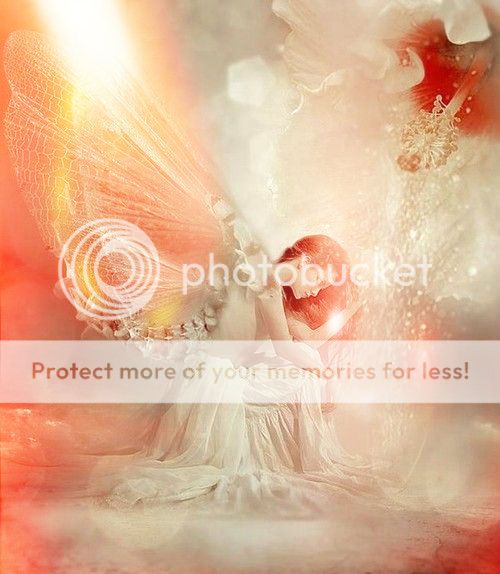

Nyd Fire
The Nyd Fire, or Need Fire, is a sacred fire lit on magical occasions or fairy festivals by using friction or light projected by a magnifying glass.
DRAKES or Grak or Krat or Drachen are English, German and Scandinavian fire fairies who are said to smell like rotten eggs, and their presence is usually only betrayed by the stench, though they are sometimes glimpsed as a flaming ball.
They only take on the character of fire when they fly, then they look like streaks of flame or fiery balls with long tails. They move into a house and keep the firewood dry and bring gifts of gold and grain to the master of the house. The bond is between the male head of the house and the male drake, and is a serious pact, often written in blood.
[Originally the spirits of the drakes were kept imprisoned in carved mandrake roots.]
The drake takes care of the house, barn and stables, making sure that the pantry and money chest are well stocked. They can travel the world in a split second, and bring their masters a present back from far away places.
In return, the master keeps the drake fed and treated with respect. Should the drake be insulted the house will not be there long. If you see a drake on its travels, take shelter, for they leave behind a poisonous sulfurous fug. If you quickly shout "half and half" or throw a knife at the creature, then the drake may drop some of its booty in your lap. If two people together see a drake, they should cross their legs in silence, take the fourth wheel off the wagon and take shelter.
The drake will then be compelled to leave them some of his haul. They are flying dragons known in Anglo Saxon England. Drake appears in many place names like Drakenage Farm [‘Drake’s Ridge] in Warks, and Drakelow [Dragon Mound] nr Stourbridge.

WILL O’THE WISP is a curious light seen flickering in the distance over swamps and marshes. In many parts of the world the will o’the wisp is attributed to the bog fairies or mischievous imps who appear as balls of light to lead travellers astray or fairies who carry lanterns to guide the unwary over cliff tops or into marshland.
If a person follows one they may meet their death in a bog or a deep pool, though some lights have been helpful, and shown travellers to safety. Some particularly vicious will o'the wisps have chased terrified people through mire and thorns, leaving them stranded amid peals of malicious laughter.
Some say that the lights are the souls of dead children as are the British spunkies. Others say that will o'the wisps are the souls of greedy men with hidden treasure, money lenders and swindlers, or people neither good enough for heaven nor evil enough for hell.
In Northern Europe such lights are seen hovering over the tombs or burial mounds of warriors, and thought to be the souls of the dead, guarding the treasure buried within the grave.
In German and Swedish lore the lights belong to the souls of those who, in life, disregarded boundary markers and stole a neighbour's land. In Italy they are souls in purgatory. Seeing a will o'the wisp or corpse may be an omen of death, either for the person who sees it, or someone they love.
FIRE ELEMENTALS
Spirits composed solely from one element. The ancients believed that a spirit inhabited every stream, hill, tree, and natural thing. Following the theory of the four elements the Neoplatonists divided these spirits into four classes, each associated with one of the elements.
However, it was the sixteenth century alchemist, doctor and philosopher Paracelsus who gave them their familiar names. He called the elemental spirits of fire Vulcans or salamanders [from the Greek meaning ‘fireplace’] and are usually portrayed as the newts of the same name.
According to Paracelsus, while sylphs and undines are kindly disposed towards humans, salamanders cannot be approached or approach humans, and gnomes are usually malevolent. Paracelsus declared that while man is made of three substances, the spiritual, the astral, and visible or terrestrial and exists in all three, elementals live exclusively in only one of the elements. They occupy a position between men and pure spirits, though they have blood and bones, they eat and sleep and mate and produce offspring.
They are not immortal but can succumb to disease. They live in dwellings that are made of special materials ‘as different from the substances we know as the web of a spider is different from our linen’. He said that elementals have no souls and are incapable of spiritual development.
Some occultists believe that fairies are elementals, spirit-beings made up of one element only - earth, air, fire or water. Sinistrari described beings of an intermediate nature between the angels and man, capable of independent thought and of choosing good or evil, composed of one of the four elements.
Ritual magicians, modern witches and Pagans call upon the spirits of the four elements. They maintain that they are beings who have evolved along another line to humans. In the Cabala they are called the Shedim.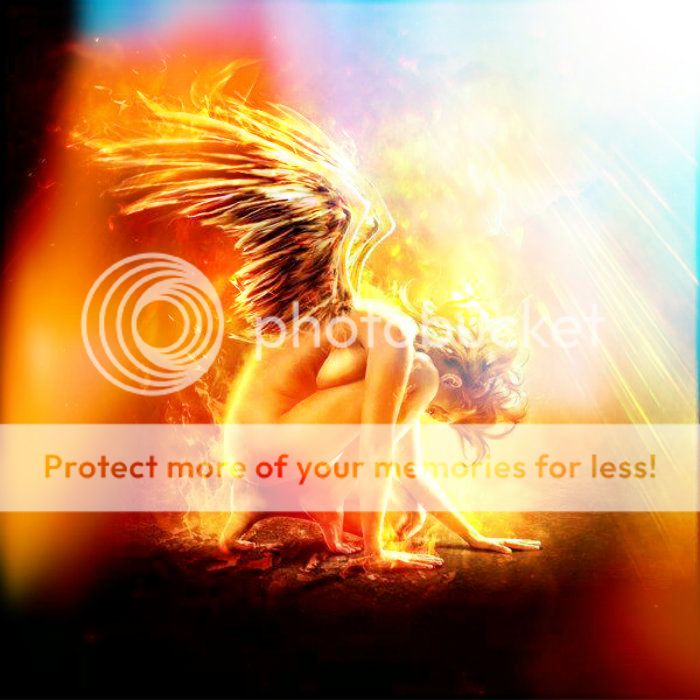
Sources: http://www.mythicalcreaturesguide.com/page...Fire+Elementals
www.merciangathering.com/fire_fairies.htm.
The Fire Fairies2 Dicembre 2013 |


